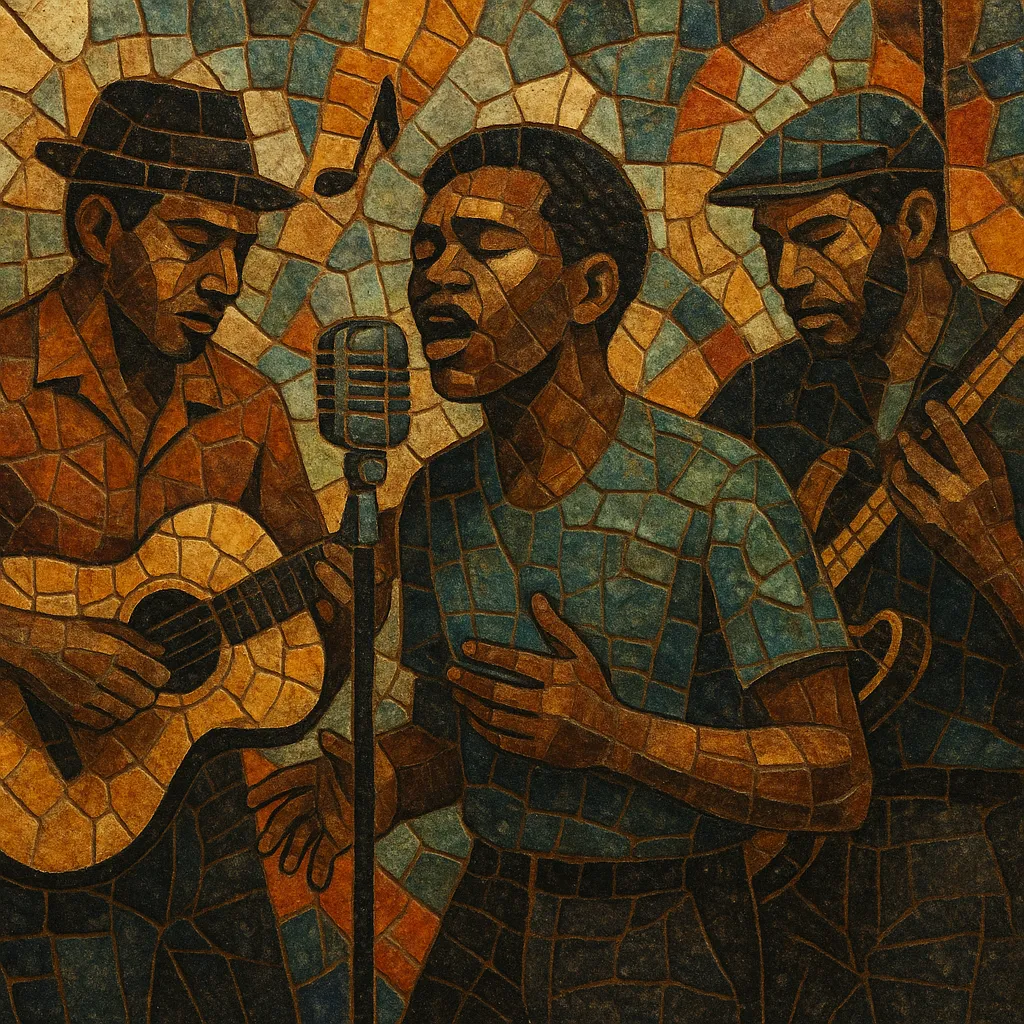Rocksteady is a Jamaican popular music style that emerged in the mid‑1960s as a slowed‑down, more soulful successor to ska and the direct precursor to reggae. It retains ska’s off‑beat guitar/piano "skank" but lowers the tempo, brings the bass to the foreground, and favors expressive vocal harmonies.
Typically recorded by small studio bands with guitar, electric bass, drums, piano/organ, and occasional horns, rocksteady emphasizes melodic, inventive basslines, tight rhythm guitar, rimshot/side‑stick drums, and sparse horn figures. Lyrically it ranges from tender love songs and yearning ballads to rude‑boy narratives and social commentary. Its concise arrangements and groove‑driven feel make it both danceable and emotionally resonant.
Rocksteady arose in Kingston, Jamaica around 1966, as bandleaders, singers, and producers slowed ska’s brisk tempo to suit changing dance styles and the sweltering summer heat. American rhythm & blues and soul balladry—widely heard on Jamaican radio—shaped the smoother vocals and harmonies, while local traditions like mento provided a cultural foundation. Early signals of the shift include Hopeton Lewis’s “Take It Easy,” often cited as the first rocksteady recording.
Two Kingston studios—Coxsone Dodd’s Studio One and Duke Reid’s Treasure Isle—became hubs for the style. House bands such as the Supersonics and the Soul Vendors refined the hallmark sound: prominent, melodic basslines; side‑stick drum backbeats; skanking guitar and piano; and occasional, restrained horn lines. Producers favored tight arrangements and warm, dry mixes that foregrounded vocals and groove.
The late 1966 to 1968 period produced a rich catalog of hits from artists like Alton Ellis, The Paragons, The Heptones, Phyllis Dillon, Ken Boothe, The Techniques, and Slim Smith & The Uniques. The repertoire blended romantic themes with rude‑boy chronicles, echoing the realities of urban Kingston while remaining eminently danceable.
By 1968–1969, drumming patterns evolved toward the one‑drop and other feels, tempos shifted again, and reggae crystallized from rocksteady’s template. Rocksteady’s bass‑centric arranging, vocal trios, and studio craft directly shaped early reggae (including skinhead reggae), later informing roots reggae, dub experimentation, lovers rock in the UK, and even 2 Tone and ska revivals. Though brief, rocksteady stands as a pivotal bridge between ska and reggae and a timeless wellspring for modern Jamaican and global popular music.


